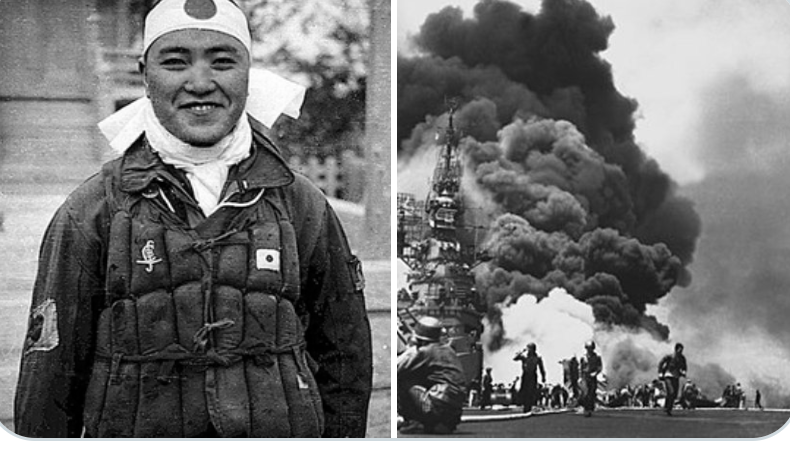On this day 78 years ago, Kamikaze suicide planes sent by desperate Imperial Japan screamed down from the skies over Surigao Strait in the Philippines, killing as much as 3000 US service men.
In a surprising move on Oct. 25, 1944, the escort carrier USS St. Lo was the first ship targeted by a squadron of about half a dozen kamikazes.
The Japanese Zero fighter planes were stripped down of normal equipment and packed with over 500 pounds of explosives.
The suicide pilots crashed planes loaded down with explosives, extra fuel and special missiles into enemy ships.
Kamikazes also struck American escort carriers USS Kalinin Bay, USS Kitkun Bay, USS Santee, USS Suwannee and USS White Plains, according to the Naval History and Heritage Command website; the attacks killed nearly 300 American sailors and wounded hundreds more in those first horrifying suicide attacks on Oct. 25 alone.
“The damage from the attack was so severe that the St. Lo sank in just 30 minutes,” reported the National World War II Museum.
“Out of 889 crewmen aboard, 134 lost their lives in the first kamikaze attack of World War II.”
St. Lo survivor Orville Bethard told the museum that the frenzied Japanese suicide planes screamed at full throttle, at speeds of over 300 miles per hour.
“The Americans who witnessed these first kamikaze attacks were horrified and shaken.” — James P. Duffy
By the end of World War II in the summer of 1945, about 130 American warships were sunk or damaged by kamikazes, according to several military history sources.
As many as 3,000 U.S. servicemen and women were killed, with thousands more wounded, in the suicide attacks by Japan.
About 5,000 Japanese kamikaze pilots killed themselves, according to an estimate by the National Air and Space Museum.
The name kamikaze is translated to “divine wind.” It’s a historical reference in Japan to a typhoon that suddenly destroyed a Mongol fleet in the 13th century and saved the island nation from invasion.
“The fanatical resolve of Japanese pilots turned their aircraft into human guided missiles,” reported the Naval History and Heritage Command.
“While these results did not prevent Japan’s defeat in the Philippines, they exceeded considerably what the Japanese achieved with orthodox air tactics alone. This guaranteed the greater use of kamikazes going forward.”
“The fanatical resolve of Japanese pilots turned their aircraft into human guided missiles.”






